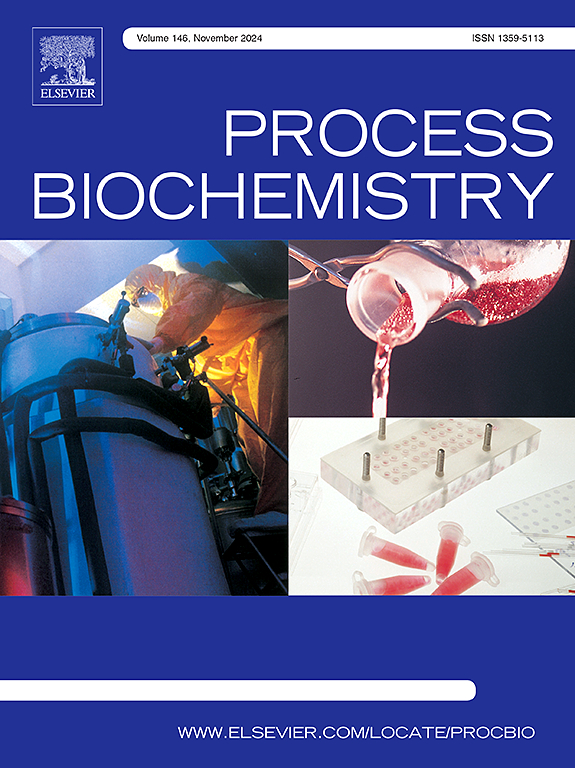Bioremediation of Sr2+ contamination based on microbially induced carbonate precipitation (MICP) simulated by Enterobacter sp.
IF 4
3区 生物学
Q2 BIOCHEMISTRY & MOLECULAR BIOLOGY
引用次数: 0
Abstract
Microbially induced carbonate precipitation (MICP) has shown significant potential for Sr2+ bioremediation in both laboratory and field settings. However, previous studies have primarily focused on urease-producing bacteria, with the potential of ammonifying bacteria remaining largely uninvestigated. This study explores the capacity of the ammonifying bacterium Enterobacter sp. JC-1 to promote carbonate mineral formation and enhance Sr2+ removal under both static and shaking conditions. Solution chemistry analysis indicated that Enterobacter sp. JC-1 strain elevated both the pH value and HCO3- concentration, inducing supersaturation with respect to calcite and strontianite, thereby promoting carbonate precipitation. Mineralogical characterization via XRD and SEM confirmed the formation of calcium-bearing strontianite with a microspherical morphology. During mineralization, Sr2+ and Ca2+ co-precipitated at molar ratios of approximately 1:1 (static conditions) and < 1:1 (shaking conditions), achieving Sr2+ removal rate of 22 % and 33 %. Correlation analysis identified OD600 and mineral mass as key factors influencing Sr2+ removal. Comparative analysis with previous studies indicated that the Sr2+ removal rate of JC-1 strain was lower than that of urease-producing bacteria, it exceeded that of urease-producing fungi. These findings highlight the potential of ammonifying bacteria as viable candidates for MICP-based bioremediation of heavy metals and radionuclides, thereby expanding the applicability of MICP in environmental engineering.

基于模拟微生物诱导碳酸盐沉淀(MICP)的Sr2+污染生物修复
微生物诱导碳酸盐沉淀(MICP)在实验室和现场环境中都显示出Sr2+生物修复的巨大潜力。然而,以前的研究主要集中在产生脲酶的细菌上,氨化细菌的潜力在很大程度上尚未得到研究。本研究探讨了氨化细菌Enterobacter sp. JC-1在静态和震动条件下促进碳酸盐矿物形成和增强Sr2+去除的能力。溶液化学分析表明,Enterobacter sp. JC-1菌株提高了pH值和HCO3-浓度,导致方解石和锶矿过饱和,从而促进碳酸盐沉淀。XRD和SEM的矿物学表征证实了该含钙强锰矿的形成,其形貌呈微球形。矿化过程中,Sr2+和Ca2+以约1:1(静态条件)和<; 1:1(震动条件)的摩尔比共沉淀,Sr2+去除率分别为22 %和33 %。相关分析表明,OD600和矿物质量是影响Sr2+去除率的关键因素。与前人研究对比分析表明,JC-1菌株的Sr2+去除率低于产脲菌,但超过产脲菌。这些发现突出了氨化细菌作为基于MICP的重金属和放射性核素生物修复的可行候选者的潜力,从而扩大了MICP在环境工程中的适用性。
本文章由计算机程序翻译,如有差异,请以英文原文为准。
求助全文
约1分钟内获得全文
求助全文
来源期刊

Process Biochemistry
生物-工程:化工
CiteScore
8.30
自引率
4.50%
发文量
374
审稿时长
53 days
期刊介绍:
Process Biochemistry is an application-orientated research journal devoted to reporting advances with originality and novelty, in the science and technology of the processes involving bioactive molecules and living organisms. These processes concern the production of useful metabolites or materials, or the removal of toxic compounds using tools and methods of current biology and engineering. Its main areas of interest include novel bioprocesses and enabling technologies (such as nanobiotechnology, tissue engineering, directed evolution, metabolic engineering, systems biology, and synthetic biology) applicable in food (nutraceutical), healthcare (medical, pharmaceutical, cosmetic), energy (biofuels), environmental, and biorefinery industries and their underlying biological and engineering principles.
 求助内容:
求助内容: 应助结果提醒方式:
应助结果提醒方式:


